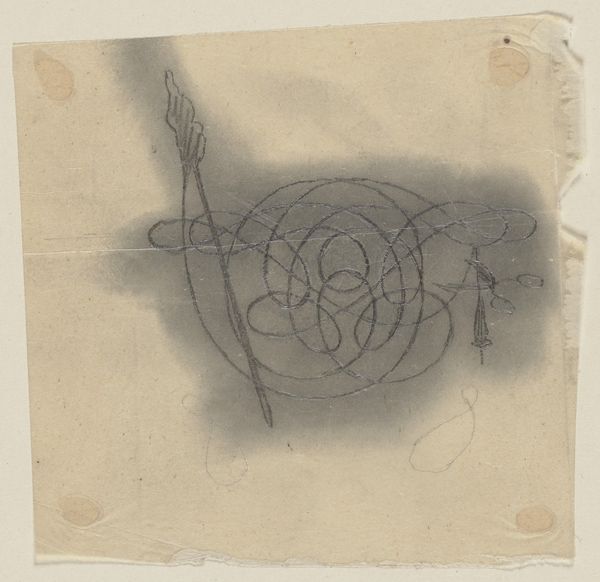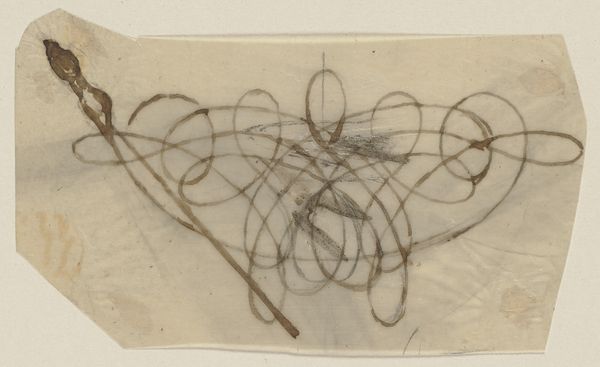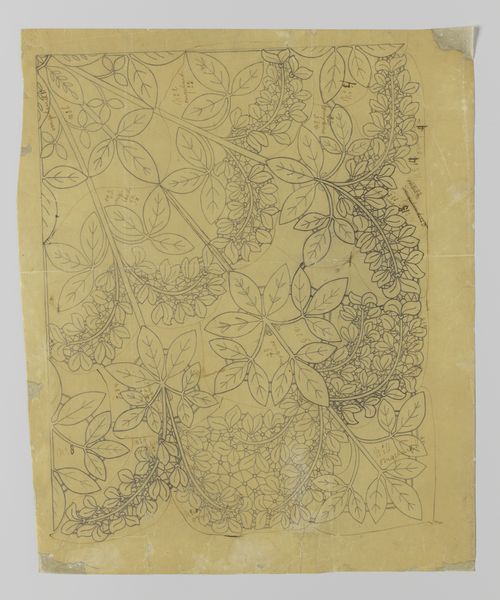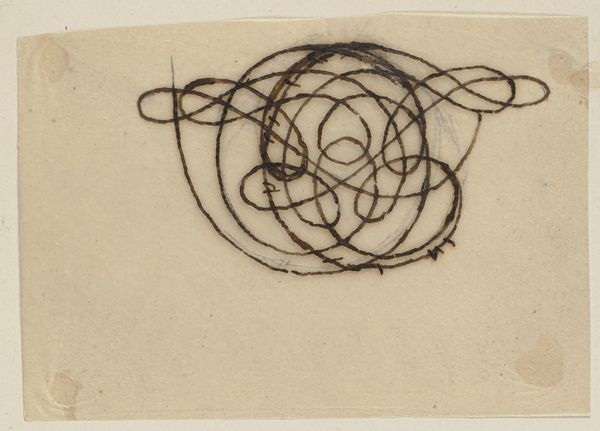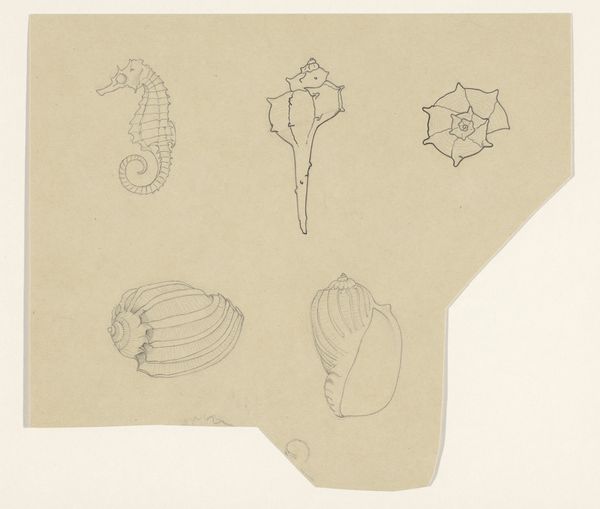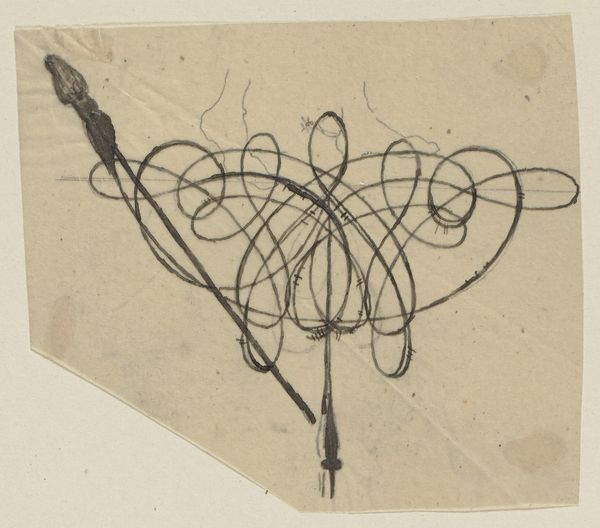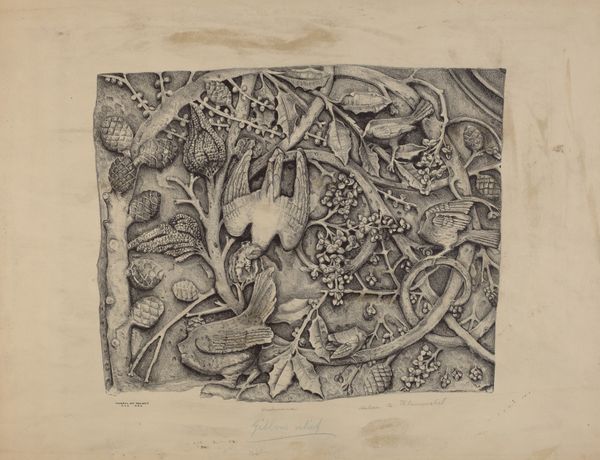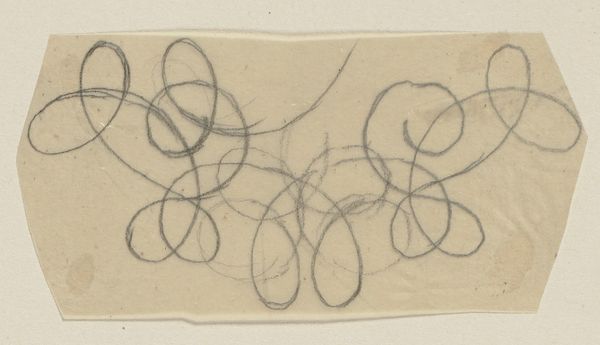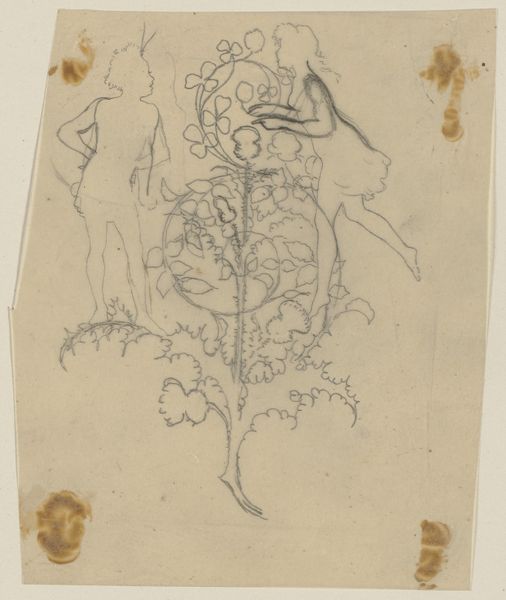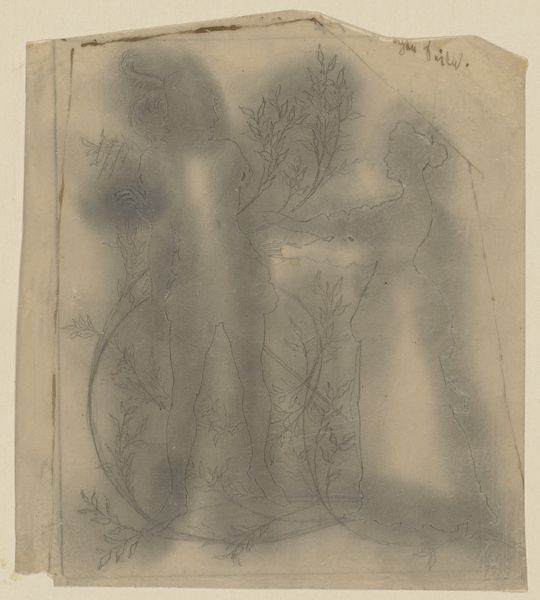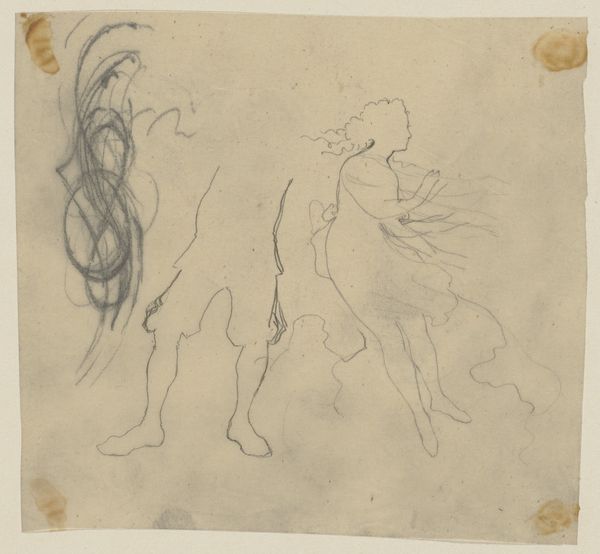
Ornamente mit Delphinen zu Titania, ein Blumenbouquet tragend c. 1867 - 1868
0:00
0:00
drawing, ornament, pencil
#
drawing
#
ornament
#
16_19th-century
#
form
#
geometric
#
pencil
#
line
Copyright: Public Domain
Editor: Here we have "Ornamente mit Delphinen zu Titania, ein Blumenbouquet tragend," a pencil drawing by Paul Konewka from around 1867. There's something so dreamlike about the delicate lines and swirling forms. It feels almost like looking at the blueprints for a hidden, whimsical world. What strikes you most when you look at this, or how do you interpret it? Curator: What immediately jumps out is the drawing’s clear connection to both classical mythology and the decorative arts. Konewka, working in the 19th century, engages with the long legacy of representing women and mythological figures as idealized, ornamental forms. Look at how Titania, a figure of feminine power from Shakespeare's "A Midsummer Night's Dream," is merged with dolphins and floral motifs. What might that suggest about the roles assigned to women, especially in the Victorian era? Editor: It seems to put her into a very prescribed and ornamental box, even with the association with the freedom of dolphins. Curator: Precisely! And think about the artistic conventions of the time. The emphasis on delicate lines, precise forms, and the subject matter itself reinforces established hierarchies. Whose gaze is this imagery intended for, and what does it communicate about the perceived value and role of women within society at that time? What statement could the artist be making? Editor: It definitely feels like a critical perspective, placing the mythological in contrast with real gender stereotypes. Curator: The contrast serves as a potent commentary. Art like this encourages us to analyze the ways societal norms and expectations become embedded within artistic expression, prompting us to question power dynamics and resist singular narratives. Editor: I hadn't considered it that way initially, but viewing it through that lens brings out a lot more meaning. I see the drawing’s beauty as existing hand in hand with its underlying message about gender and representation. Curator: Exactly. By critically examining the work, we unlock opportunities to explore important dialogues on how identities and their narratives are historically constructed and contested.
Comments
No comments
Be the first to comment and join the conversation on the ultimate creative platform.
